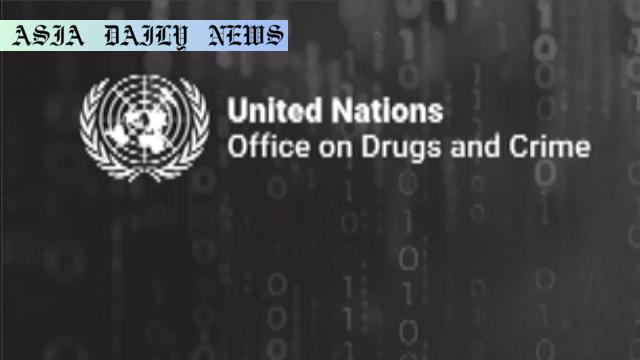Cyberfraud networks spread through Southeast Asia globally, driven by AI and criminal coordination.
- Cyberfraud is expanding globally, originating from Southeast Asia.
- Criminal networks are leveraging AI-driven technologies for fraud.
- UN calls for international coordination to combat the rise.

The Growing Threat of Cyberfraud
Cyberfraud has become a significant global challenge, with its roots firmly planted in Southeast Asia. The United Nations’ recent report has issued a dire warning: these fraud operations, which began in border areas like Cambodia, Laos, Myanmar, and the Philippines, are no longer confined to this region. Instead, they are spreading across continents, infiltrating countries in South America and Africa. This exponential growth, fueled by advancements in artificial intelligence and collaboration with international criminal organizations, presents a sophisticated and organized threat to global cybersecurity.
AI-Driven Technologies Amplify the Scale
One of the main reasons for this rapid expansion is the evolution and application of AI-driven technologies by these criminal networks. These technologies enhance operational efficiency, enabling more precise targeting and the creation of convincing scams. From fake emails to AI-generated deepfake voices and videos, perpetrators now have sophisticated tools at their disposal. This makes it increasingly difficult for authorities and even victims to differentiate between legitimate and fraudulent activities.
Action from Governments Around the World
The United Nations has called on governments globally to enhance collaboration in combating cyberfraud. Southeast Asian countries have already begun cracking down on the operations, but these efforts are not enough. The UN Office on Drugs and Crime (UNODC) emphasizes the need for financial intelligence sharing, cross-border investigations, and synchronized international efforts. Without this collaboration, the threat will continue to grow exponentially, challenging financial systems and destabilizing economies.
The Role of Collaboration and Vigilance
While governments play a crucial role, public awareness and vigilance also form a vital line of defense. Educating individuals and businesses on potential threats, identifying suspicious activities, and reporting them promptly are key steps in mitigating the reach of cyberfraud. The fight against cybercrime requires a multifaceted approach that combines technological safeguards, international partnerships, and public consciousness. Only then can we hope to curb this escalating menace.



Commentary
Cyberfraud’s Global Impact Is Alarming
The UN’s warning on the escalating global reach of cyberfraud originating from Southeast Asia is an important wake-up call. As highlighted in the report, these networks are sophisticated and resilient, capable of adapting and thriving even in the face of intensified government crackdowns. This adaptability, reinforced by AI technology and global criminal partnerships, underscores the urgency to address the issue at both local and international levels.
The Need for Coordinated Global Efforts
What is particularly concerning is the lack of synchronized global efforts to combat cyberfraud. While some Southeast Asian governments have taken commendable steps in raiding scam compounds, the problem is far from eradicated. These operations simply migrate to newer locations, evolving alongside the enforcement measures. It is imperative for nations to enhance coordination, share intelligence, and work collectively to dismantle these networks effectively.
Can Technology Fight Fraud?
The irony lies in the use of advanced technologies like AI by these criminal groups. AI has become a double-edged sword, empowering fraudsters while also holding the potential to be a powerful tool for prevention and justice. Authorities must invest in technological innovations that can outpace these rapidly evolving threats. This includes AI-based detection systems, blockchain for secure transactions, and heightened cybersecurity measures for businesses and individuals alike.
Raising Awareness is Key
Raising public awareness is another critical element in this battle. Educating businesses and individuals about potential scams, recognizing red flags, and fostering a culture of cybersecurity vigilance are essential steps. The involvement of private organizations, educational institutions, and media in spreading this awareness cannot be overstated. Together, a multifaceted approach can help mitigate the risks and significantly reduce the impacts of cyberfraud globally.